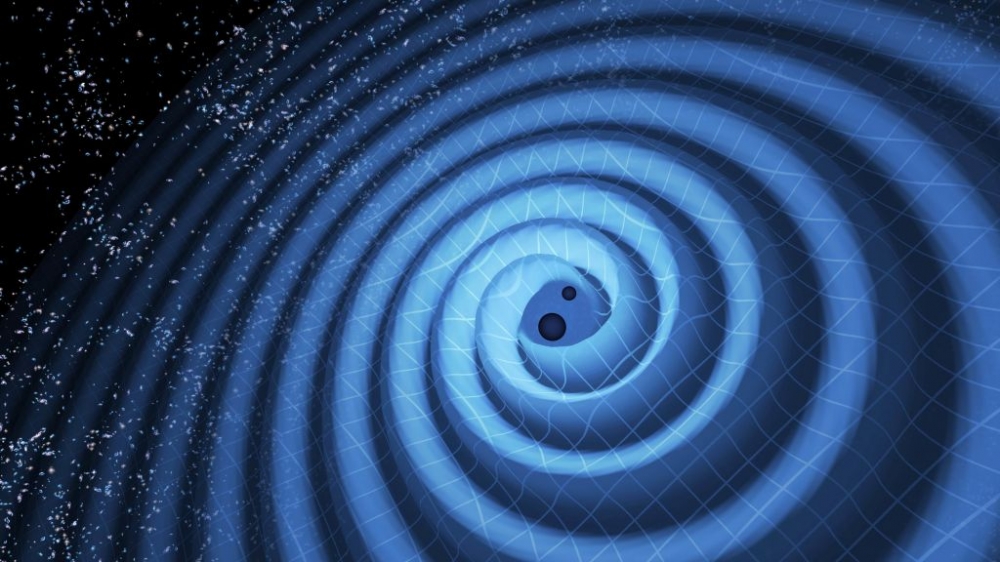The Universe Remembers Gravitational Waves — And We Can Find Them

An artist's illustration of two black holes merging and creating ripples in spacetime known as gravitational waves. (Image: © LIGO/T. Pyle)
By Paul Sutter 6.12.2019
Scientists are on the verge of being able to detect the "memory" left behind by gravitational waves.
Paul M. Sutter is an astrophysicist at The Ohio State University, host of Ask a Spaceman and Space Radio, and author of "Your Place in the Universe." Sutter contributed this article to Space.com's Expert Voices: Op-Ed & Insights.
Gravitational waves slosh throughout the universe as ripples in space-time produced by some of the most cataclysmic events possible.
With facilities like the Laser Interferometer Gravitational-Wave Observatory (LIGO) and Virgo, we can now detect the strongest of those ripples as they wash over the Earth. But gravitational waves leave behind a memory — a permanent bend in space-time — as they pass through, and we are now on the verge of being able to detect that too, allowing us to push our understanding of gravity to the limits.
See full article